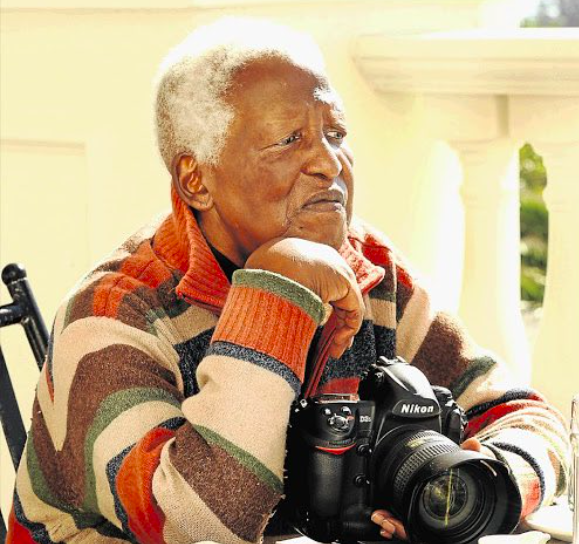Johannesburg – Peter Magubane, a South African photojournalist who chronicled decades of violence during the country’s apartheid era including the Soweto student uprising of 1976, died Monday aged 91, his family announced.
Magubane also became the official photographer of Nelson Mandela when the anti-apartheid leader was released from prison in 1990 and until he became president four years later.
One of his most iconic images, from 1956, captured a young white girl sitting on a bench marked “Europeans Only”, her black maid sitting behind her on the other side of the bench.
I have learned with great sadness of the passing of veteran photographer and activist Peter Magubane at the age of 91.
On behalf of government and the nation, I offer my deep condolences to the Magubane family, our veteran’s friends and his countless associates around the… pic.twitter.com/mfHD53Ljct
— Cyril Ramaphosa 🇿🇦 (@CyrilRamaphosa) January 1, 2024
“He was very passionate about his work, everything else would stop when it comes to his work,” his daughter Fikile told SABC television.
No cause of death was given, but the SACEF journalists’ association said “he passed on today peacefully surrounded by his family”.
Magubane worked in the photography lab of the black urban culture magazine Drum before moving behind the camera, where he quickly focused on documenting the harsh reality of apartheid, and key moments in the struggle for equality.
RIP #PeterMagubane. These pictures of #WinnieMandela that you captured are so historic. She talked about these scenes & more in my interviews that
I had with her.
The pain of leaving her children & being put in solitary confinement. She talked about a lonely life in banishment. pic.twitter.com/yebwGzPNPC— Felicia Mabuza-Suttle (@Feliciamabuza) January 1, 2024
In 1969 he was arrested while covering protests in front of the prison where Winnie Mandela and other activists were being held.
He was imprisoned and spent 586 days in solitary confinement, and upon release ordered to stop his photography activities for five years.
Magubane was again arrested in 1971 and held for several months, and then continued to work while trying to evade police surveillance.
Peter Magubane’s work pic.twitter.com/xlTNaXlBvt
— Saki Zamxaka (@Saki_Zam) January 1, 2024
During the Soweto uprising of 1976 he captured some of the most striking images of the student revolt and gained widespread notoriety.
“South Africa has lost a freedom fighter, a masterful storyteller and lensman… Peter Magubane fearlessly documented apartheid’s injustices,” Culture Minister Zizi Kodwa wrote on social media.
Follow African Insider on Facebook, Twitter and Instagram
Source: AFP
Picture: X/@CyrilRamaphosa
For more African news, visit Africaninsider.com


